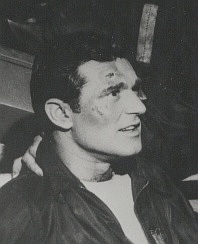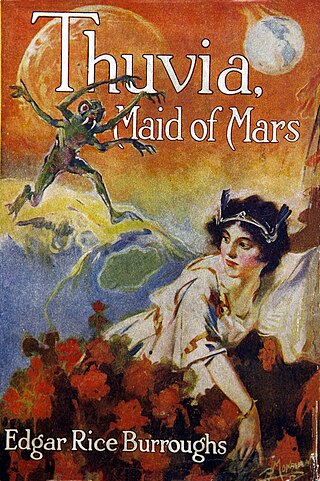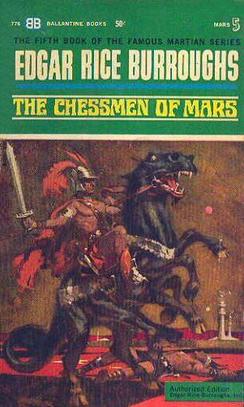Grok is a neologism coined by American writer Robert A. Heinlein for his 1961 science fiction novel Stranger in a Strange Land. While the Oxford English Dictionary summarizes the meaning of grok as "to understand intuitively or by empathy, to establish rapport with" and "to empathize or communicate sympathetically (with); also, to experience enjoyment", Heinlein's concept is far more nuanced, with critic Istvan Csicsery-Ronay Jr. observing that "the book's major theme can be seen as an extended definition of the term." The concept of grok garnered significant critical scrutiny in the years after the book's initial publication. The term and aspects of the underlying concept have become part of communities such as computer science.

A nerve is an enclosed, cable-like bundle of nerve fibers in the peripheral nervous system.

In biology, the nervous system is the highly complex part of an animal that coordinates its actions and sensory information by transmitting signals to and from different parts of its body. The nervous system detects environmental changes that impact the body, then works in tandem with the endocrine system to respond to such events. Nervous tissue first arose in wormlike organisms about 550 to 600 million years ago. In vertebrates it consists of two main parts, the central nervous system (CNS) and the peripheral nervous system (PNS). The CNS consists of the brain and spinal cord. The PNS consists mainly of nerves, which are enclosed bundles of the long fibers or axons, that connect the CNS to every other part of the body. Nerves that transmit signals from the brain are called motor nerves or efferent nerves, while those nerves that transmit information from the body to the CNS are called sensory nerves or afferent. Spinal nerves are mixed nerves that serve both functions. The PNS is divided into three separate subsystems, the somatic, autonomic, and enteric nervous systems. Somatic nerves mediate voluntary movement. The autonomic nervous system is further subdivided into the sympathetic and the parasympathetic nervous systems. The sympathetic nervous system is activated in cases of emergencies to mobilize energy, while the parasympathetic nervous system is activated when organisms are in a relaxed state. The enteric nervous system functions to control the gastrointestinal system. Both autonomic and enteric nervous systems function involuntarily. Nerves that exit from the cranium are called cranial nerves while those exiting from the spinal cord are called spinal nerves.

The peripheral nervous system (PNS) is one of two components that make up the nervous system of bilateral animals, with the other part being the central nervous system (CNS). The PNS consists of nerves and ganglia, which lie outside the brain and the spinal cord. The main function of the PNS is to connect the CNS to the limbs and organs, essentially serving as a relay between the brain and spinal cord and the rest of the body. Unlike the CNS, the PNS is not protected by the vertebral column and skull, or by the blood–brain barrier, which leaves it exposed to toxins.

"People Are Alike All Over" is episode 25 of the American television anthology series The Twilight Zone.

A Princess of Mars is a science fantasy novel by American writer Edgar Rice Burroughs, the first of his Barsoom series. It was first serialized in the pulp magazine All-Story Magazine from February–July, 1912. Full of swordplay and daring feats, the novel is considered a classic example of 20th-century pulp fiction. It is also a seminal instance of the planetary romance, a subgenre of science fantasy that became highly popular in the decades following its publication. Its early chapters also contain elements of the Western. The story is set on Mars, imagined as a dying planet with a harsh desert environment. This vision of Mars was based on the work of the astronomer Percival Lowell, whose ideas were widely popularized in the late 19th and early 20th centuries.

Thuvia, Maid of Mars is a science fantasy novel by American writer Edgar Rice Burroughs, the fourth of the Barsoom series. The principal characters are Carthoris and Thuvia of Ptarth, each of whom appeared in the previous two novels.

Colonization or settlement of Mars is the theoretical human migration and long-term human establishment of Mars. The prospect has garnered interest from public space agencies and private corporations and has been extensively explored in science fiction writing, film, and art.

Jetan, also known as Martian Chess, is a chess variant first published in 1922. It was created by Edgar Rice Burroughs as a game played on Barsoom, his fictional version of Mars. The game was introduced in The Chessmen of Mars, the fifth book in the Barsoom series. Its rules are described in Chapter 2 and in the Appendix of the book, with an actual game partly described in Chapter 17.

Matthew 5:29 is the twenty-ninth verse of the fifth chapter of the Gospel of Matthew in the New Testament and is part of the Sermon on the Mount. It is the third verse of the discussion of adultery.

The Chessmen of Mars is a science fantasy novel by American writer Edgar Rice Burroughs, the fifth of his Barsoom series. Burroughs began writing it in January, 1921, and the finished story was first published in Argosy All-Story Weekly as a six-part serial in the issues for February 18 and 25 and March 4, 11, 18 and 25, 1922. It was later published as a complete novel by A. C. McClurg in November 1922.
A Miracle of Science is a science fiction webcomic written by Jon Kilgannon, with art by Mark Sachs. The story follows the exploits of Benjamin Prester and his partner Caprice Quevillion as they move from world to world in pursuit of Dr. Virgil Haas, a man who suffers from Science Related Memetic Disorder, basically a mad scientist. It is set in the year 2148 and there have been significant technological advances, such as the terraforming and subsequent colonization of multiple planets and moons in the Solar System.

Asteroids, including those in the asteroid belt have been suggested as a possible site of human colonization. Some of the driving forces behind this effort to colonize asteroids include the survival of humanity, as well as economic incentives associated with asteroid mining. The process of colonizing asteroids does have many obstacles that must be overcome for human habitation, including transportation distance, lack of gravity, temperature, radiation, and psychological issues.

Dejah Thoris is a fictional character and princess of the Martian city-state/empire of Helium in Edgar Rice Burroughs' series of Martian novels. She is the daughter of Mors Kajak, Jed (chieftain) of Lesser Helium, and the granddaughter of Tardos Mors, Jeddak of Helium. She is the love interest and later the wife of John Carter, an Earthman mystically transported to Mars, and subsequently the mother of their son Carthoris and daughter Tara. She plays the role of the conventional damsel in distress who must be rescued from various perils, but is also portrayed as a competent and capable adventurer in her own right, fully capable of defending herself and surviving on her own in the wastelands of Mars.

The Martians, also known as the Invaders, are the race of extraterrestrials and the main antagonists from the H.G. Wells 1898 novel The War of the Worlds. They are the main antagonists of the novel, and their efforts to exterminate the populace of the Earth and claim the planet for themselves drive the plot and present challenges for the novel's human characters. They are notable for their use of extraterrestrial weaponry far in advance of that of mankind at the time of the invasion.

Alita, or Gally in the original Japanese version, is the title character and the main protagonist of Yukito Kishiro's cyberpunk manga series Gunnm and its sequels Last Order and Mars Chronicle.

The Red King is a supervillain appearing in American comic books published by DC Comics. He first appeared in JLA Secret Files 2004 #1, and was created by Dan Slott and Dan Jurgens.
"Mars: The Home Front" is a short story by American writer George Alec Effinger, published in the 1996 anthology War of the Worlds: Global Dispatches. It is a crossover between H. G. Wells' 1898 novel The War of the Worlds and Edgar Rice Burroughs' Barsoom series.

Barsoom is a fictional representation of the planet Mars created by American pulp fiction author Edgar Rice Burroughs. The first Barsoom tale was serialized as Under the Moons of Mars in 1912 and published as a novel as A Princess of Mars in 1917. Ten sequels followed over the next three decades, further extending his vision of Barsoom and adding other characters.

Mars to Stay missions propose astronauts sent to Mars for the first time should intend to stay. Unused emergency return vehicles would be recycled into settlement construction as soon as the habitability of Mars becomes evident to the initial pioneers. Mars to Stay missions are advocated both to reduce cost and to ensure permanent settlement of Mars. Among many notable Mars to Stay advocates, former Apollo astronaut Buzz Aldrin has been particularly outspoken, suggesting in numerous forums "Forget the Moon, Let’s Head to Mars!" and, in June 2013, Aldrin promoted a crewed mission "to homestead Mars and become a two-planet species". In August 2015, Aldrin, in association with the Florida Institute of Technology, presented a "master plan", for NASA consideration, for astronauts, with a "tour of duty of ten years", to colonize Mars before the year 2040. The Mars Underground, Mars Homestead Project / Mars Foundation, Mars One, and Mars Artists Community advocacy groups and business organizations have also adopted Mars to Stay policy initiatives.















